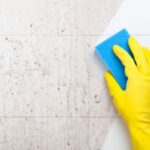People say I’m lucky – and yes I do agree. I get to travel world, work with a wonderful team and make my living from my passion. But when it comes down to the quality of the images I produce, that has nothing to do with luck. Over the years I have noticed a correlation between knowledge and image quality. The more I have educated myself, the ‘luckier’ I’ve become.
As I am not just the ‘biggest’, but also one of the ‘oldest’ dogs in the yard I have seen the equipment that is available to us as photographers change dramatically over the years. Film has made way for digital, and mega-pixels are no longer limited to single figures. All of the developments that have been made have no doubt made our jobs easier – particularly when it comes to transporting kit for jobs on location. Just recently I was sat in the departure lounge at Bergen airport (for those of you that haven’t been let me tell you it is without doubt the smallest international departure lounge I have ever sat in) thinking to myself that if it wasn’t for micro 4/3 technology, I would be a very unpopular man indeed as the people that I was sharing the space with would be stood outside in the cold due to the fact that my old full frame kit would have filled most of the room. The advances in photographic technology that have allowed for smaller, lighter kit that gives immediate feedback are – let’s face it – a god send, and will no doubt allow me to keep doing what I love for a few more years. The kit that is available today really is fantastic. It works well, and produces image files of a quality that was unimaginable even five years ago. But as good as all of this new equipment is, it couldn’t create anything if it wasn’t for me – or indeed one of you – controlling it. Yes, technology does have its advantages, but for a real grandmaster, technology is only there to augment, facilitate and ease the photographic process. Technology will never render photographers obsolete, it will never replace education and the application of knowledge when it comes to creating ‘grade A’ images.
As an old school traditionalist I am a firm believer in knowledge – not kit – being the secret to good photography. A stunning image is not just created by pressing click on a camera. To cross that fine line that separates good and brilliant, a photographer has to take several things in to consideration. Lighting, posing and composition. What story do you want an image to tell? how do you want the image to look? how do you want the image to feel?
Lighting an image in the correct way is key. Without the placement of hi-light and shadow in the correct places, a three dimensional story cannot be told through a two dimensional medium. It is highlight and shadow that gives an image depth and makes the subject feel real. Light is definitely the most important aspect of photography. It is no secret that ever since using the Olympus EM5 OM-D and adopting a micro 4/3 system I am on a mission to reduce the size of all of the kit I use, but I can guarantee you that this reduction in size will not come at the cost of sacrificing quality – especially not when it comes to lighting equipment. As much as I love and am amazed by the capabilities of my OM-D it is not the most important bit of kit in my bag, my lights and their modifiers however most definitely are. Whether they be speed lights or a full studio lighting kit, they are massively important. Without them I could not use the secret weapon that is fully responsible for the quality and consistence of my images. What is this secret weapon? Well I will tell you… It is the knowledge of how to control and manipulate light. How can you get this secret weapon for yourself? In the same way that I did, through education and years of practice. Practice makes perfect, it really is that simple.
The point I am trying to make, is that it is most definitely not about the kit. Having the gear doesn’t mean you automatically have all of the idea. Knowledge is the secret to being the best photographer that you can be. The camera may take the image, but it is the photographer that creates it. Owning a camera does not make you a photographer, it simply makes you a camera owner.
A photographer is born through years of continual training to obtain the technical knowledge needed to create a top quality image and countless hours of practice to fine tune their creative abilities. If I was to give you one ‘top tip’ it would be to take your time. Learn as much as you can and practice what you have learnt at every opportunity. Take your time whilst shooting an image and pay close attention to the fine details. Only press the shutter button when you have created the image you want to capture. Do not rely on Photoshop to rescue an image, it is a tool to be used for enhancement.
Now, it’s all very well and good me telling you that the secret to photographic success is knowledge, and that it takes several years of hard work to obtain the knowledge that you will need, but the world is a very real place indeed and sometimes a ‘quick fix’ is needed. Now unfortunately a quick fix isn’t such a quick fix when it comes to photography. There are however ‘fast lanes’ that can help you to develop your level of understanding at a faster rate. If I had to start from the beginning I would most definitely be factoring in education costs in to my plans. Now is a brilliant time to start making a successful career in the profession, partly due to the number of training opportunities available to new photographers. My hat goes off to the SWPP for the work that they put in to organising seminars and training days to help photographers develop. I would strongly encourage those who are new to the profession to listen to the knowledge that the old guard are sharing; after all, we’ve been there, done the job and bought the T-shirt. Learn as much as you can from the best that you can, as my grandma would say, you’re only ever as good as your teacher, so choose wisely and listen carefully.



